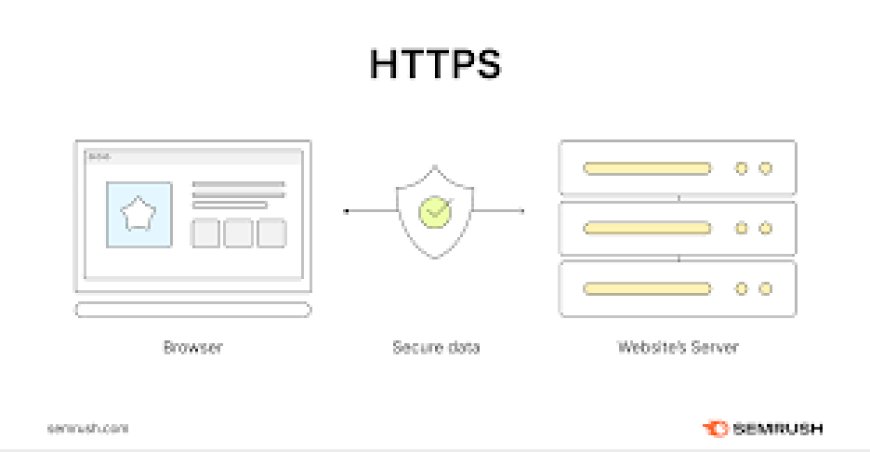What is HTTP in Websites - Detailed Guide
What is HTTP in its shortest form? It is a protocol that governs how data is transmitted or formatted and how a website should respond to any given command.

The Internet has changed how people interact, work, and find information. At the center of this change is HTTP, a core technology that helps the Internet function. But what is HTTP exactly, and why is it important to understand it?
HTTP, or Hypertext Transfer Protocol, is a set of rules for exchanging information between a user's browser and the server hosting a website. This protocol enhances the effectiveness of the Internet by making it possible to open web pages, download files, and display web content efficiently.
Whether you are an expert in Internet tech or just a normal Internet user, understanding what an HTTP proxy is and how it works is essential for you. By exploring it on deeper levels, you can understand the science of how websites load, why some pages don't work when you try to open them on your device, and how data is transmitted to any website. This knowledge also helps you make your website more secure and user experience more efficient.
So, let's discuss the science behind HTTP, how it works, and why you need to understand it.
What is HTTP Proxy?
HTTP or 'Hypertext Transfer Protocol' is a technology that provides Secure Access To Websites
and allows web browsers and servers to interconnect.
What is HTTP in its shortest form? It
is a protocol that governs how data is transmitted or formatted and how a website should respond to any given command.
It's a communication standard that governs the format and conveyance of messages and the expected reaction of web servers and browsers toward different commands. Whenever you use a web address by typing it in your browser, an HTTP command is issued to the webserver to retrieve and display the particular Web page requested.
Whenever you want to visit any website, you search its URL on search engines, and in the next second, the website appears, right? But in the backend, you are basically sending an HTTP command to the website server, which then fetches and transmits the request to the webpage.
History of HTTP
The history of HTTP started in the early 1990s when it was initially designed by Tim Berners-Lee, who invented the World Wide Web and initiated the creation of the global information base. In the beginning,
HTTP was very different and provided very limited ability, even for the transfer of plain text only. But as time passed, it can now transmit a variety of media types and data kinds, like multimedia and interactive content.
So, what is HTTP proxy? Let's understand this with a fun example.
Suppose you are at a restaurant and you order your food from a waiter. So, the waiter has the duty to get your ordered food to you on time by telling the chef in the kitchen your order correctly with all your instructions. That's exactly what HTTP is. You give a command, and HTTP has the duty to transmit your command to the web browser in order to provide you with the search results correctly, efficiently, and on time.
How HTTP Works
It is crucial to have a basic understanding of HTTP proxy and how it works in order to understand and analyze the key processes of web browsing and data acquisition.
Basic Principles of HTTP Communication:
HTTP is based on the request-response concept. As you try to visit a page through a link, or when you directly input a URL and press enter, your browser will send an HTTP request to the web server. Moreover, the request type is specific and explains what information or resource is requested.
The Request-Response Cycle:
When the user sends the request, the web server performs the request and identifies the resource the user is asking for. It then sends an HTTP response, which contains the data/information and HTTP status code that indicates the success or failure of the request.
This simple exchange exemplifies how HTTP facilitates seamless retrieval and display of web content, making it a foundational protocol for the World Wide Web. Understanding this process enhances one's ability to navigate and utilize the Internet effectively.
What is HTTP Proxy?
After understanding what is HTTP, it is time to know about what is HTTP proxy.
HTTP proxy works between the web browser and the Internet, relaying the HTTP request and response. Here's a concise explanation of its definition, purpose, and how it works:
Purpose and Definition of HTTP Proxy
An HTTP proxy is a gateway that intercepts client requests (like web browsers) seeking resources (web pages, files, etc.) from servers. It then forwards these requests on behalf of the clients, masking their IP addresses and providing anonymity and security.
How HTTP Proxies Work:
An HTTP proxy is a gateway that intercepts client requests (like web browsers) seeking resources (web pages, files, etc.) from servers. It then forwards these requests on behalf of the clients, masking their IP addresses and providing anonymity and security.
Common Use Cases for HTTP Proxies:
-
Enhanced Privacy: Preventing others from knowing your IP address and location.
-
Content Filtering: Blocking access to some websites or types of messages.
-
Load Balancing: Managing how traffic should be spread across the different servers for rotation.
Using an HTTP proxy on your website makes it more secure and versatile, making it a valuable tool for many online activities.
What is The Difference Between HTTP and HTTPS
Since you understand HTTP, you might need clarification about what is HTTPS. HTTPS or Hypertext Transfer Protocol Secure is like an additional layer of security over HTTP. Here are some key differences between both of them:
-
Encryption: HTTP transmits data in clear text, while HTTPS encrypts data to a level only the intended recipient can understand.
-
Security: HTTPS protects against eavesdropping, man-in-the-middle attacks, and data tampering that HTTP does not cover.
HTTPS protects user data such as passwords, credit card information, and other personal information from interception and increases website security.
Before applying HTTP to your website, it is important to understand the difference between HTTP and HTTPS, especially when working with websites where user data is sensitive.
Conclusion
In conclusion, HTTP is still the foundation of how information is requested/responded to on the World Wide Web. We have discussed what is HTTP and how its application has grown within a short period to become an essential necessity for the communication process between web browsers and servers.
A basic understanding of HTTP shows that it is a request-response model, the workings of HTTP proxies for security and optimization. In short, HTTP remains relevant and important as the Internet grows in functionality and complexity, and we use it to interact with the content accessed over the Internet.
FAQs
What is HTTP?
HTTP, which stands for Hypertext Transfer Protocol, is the protocol used for getting and putting web pages and other web content from the web.
What is HTTP proxy?
An HTTP proxy refers to an intermediate server that helps a client, e.g., a web browser, communicate with other servers on the Internet, aiding in security or performance.
What is the difference between HTTP and HTTPS?
While HTTPS provides an encrypted connection between a browser and server, allowing secure communication, HTTP, on the other hand, sends data and information in plain text form.
Why is HTTPS important?
HTTPS plays an important role in ensuring that anonymous persons do not intercept sensitive information such as passwords and credit card details while being transmitted over the Internet.
What's Your Reaction?














![Noots Focus Reviews [Truth Exposed 2025]!](https://news.bangboxonline.com/uploads/images/202501/image_430x256_678e3b94881a1.jpg)
![Vivalis Male Enhancement: The Must-Know Ingredients [2025 Update]](https://news.bangboxonline.com/uploads/images/202501/image_430x256_678e3b54e396c.jpg)








